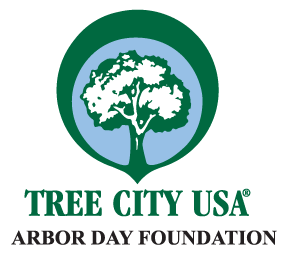Published on:
 Nearly half of Washington’s residents (48.25%) live in one of the state’s 94 “Tree City USA” communities, according to the Arbor Day Foundation. Collectively, these communities planted 46,517 trees, and spent, on average, $10.31 per capita for urban forestry management during 2019 (the most recent reporting period).
Nearly half of Washington’s residents (48.25%) live in one of the state’s 94 “Tree City USA” communities, according to the Arbor Day Foundation. Collectively, these communities planted 46,517 trees, and spent, on average, $10.31 per capita for urban forestry management during 2019 (the most recent reporting period).
Mountlake Terrace became the latest city in Washington to earn the Tree City USA recognition.
Also recognized were eight “Growth Award” recipients, with Bellevue claiming the longest active growth streak at 27 years. No new growth award recipients within Washington were named in 2019.
The primary goal of the Tree City program is to promote viable tree management programs. To earn the designation, four standards must be met:
- A tree board or department, which assumes legal responsibility for the care of all trees on city- or town-owned property. Many communities delegate tree care decisions to a professional forester or arborist, but also have a citizen-led advisory board.
- A tree care ordinance, which provides guidance for planting, maintaining and/or removing trees from streets, parks and other public spaces in that community, and stipulates activities that are required or prohibited. Such ordinances typically assign the task of crafting and implementing a plan of work and documenting annual tree care activities.
- A Community Forestry Program with an annual budget of at least $2 per capita. Such investments demonstrate a community’s commitment to grow and protect the health of their tree assets.
- An Arbor Day observance and proclamation. Such events, whether brief and a weeklong observation, enable citizens to gather to educate other residents about the benefits of community trees, and to celebrate work accomplished to plant and maintain trees.
As extensions of its Tree City USA designations, the Arbor Day Foundations also has several related recognitions, including a “Tree Line USA Utilities” program, a “Tree Campus Healthcare” program, and a “Tree Campus Higher Education” program.
PUD 1 of Chelan County earned the distinction of the state’s longest active Tree Line USA Utility, celebrating 22 years. A dozen two- and four-year accredited colleges and universities in Washington state have met the five standards for the “Tree Campus Higher Education designation.”
The Arbor Day Foundation cites numerous benefits of trees for communities and homeowners. They suggest trees can be a stimulus to economic development, attracting new businesses and tourists. Additionally, the Foundation states commercial retail areas are more attractive to shoppers, apartments rent more quickly, tenants stay longer, and space in a wooded setting is more valuable to sell or rent.
For homeowners, the benefits include:
- If you plant a tree today on the west side of your home, in 5 years your energy bills should be 3% less. In 15 years, the savings will be nearly 12%. Dr. E. Greg McPherson, Center for Urban Forest Research.
- Landscaping, especially with trees, can increase property values as much as 20 percent. Management Information Services/ICMA.
- Having large trees in yards along streets increases a home’s value from 3 percent to 15 percent. Wolf, Kathleen L, PhD, University of Washington (2007) City Trees and Property Values. Arborist News. 16, 4:34-36.
- Healthy, mature trees add an average of 10 percent to a property’s value. USDA Forest Service
One acre of forest absorbs six tons of carbon dioxide and puts out four tons of oxygen – enough to meet the annual needs of 18 people, according to the U.S. Department of Agriculture.
The USDA Forest Service says trees properly placed around buildings can reduce air conditioning needs by 30 percent and can save 20-50 percent in energy used for heating. Planting trees also means improved water quality, resulting in less runoff and erosion. Tree plantings also allow more recharging of the ground water supply, according to the Forest Service. Wooded areas help prevent the transport of sediment and chemicals into streams, they explain.
Founded in 1972, the Arbor Day Foundation has grown to become the largest nonprofit membership organization dedicated to planting trees, with more than one million members, supporters, and valued partners. During the last 45 years, more than 350 million Arbor Day Foundation trees have been planted in neighborhoods, communities, cities and forests throughout the world.
Tree City USA is supported by USDA Forest Service, Urban and Community Forestry, and the National Association of State Foresters.